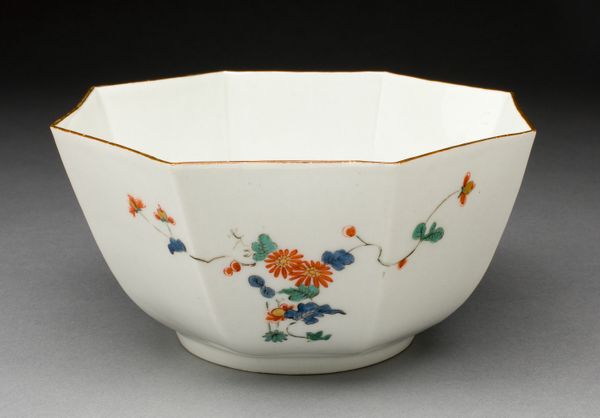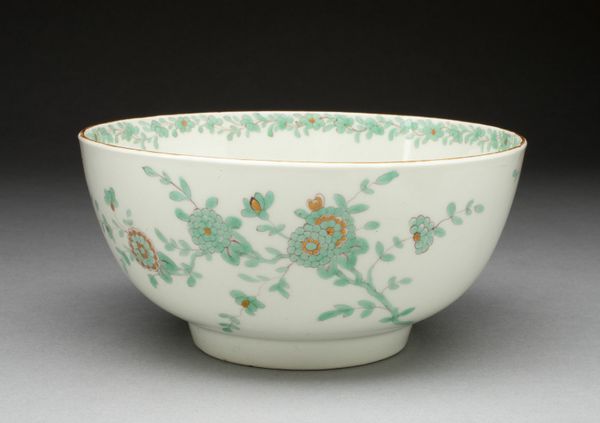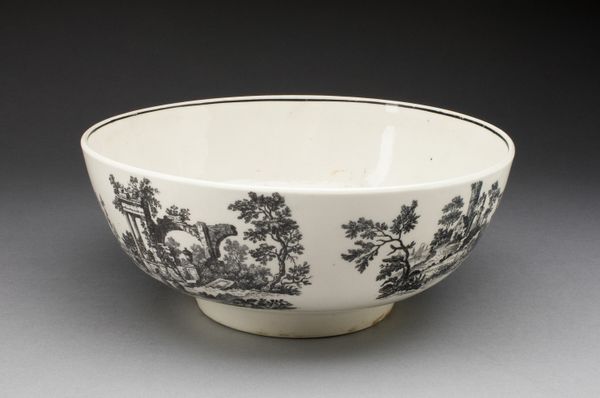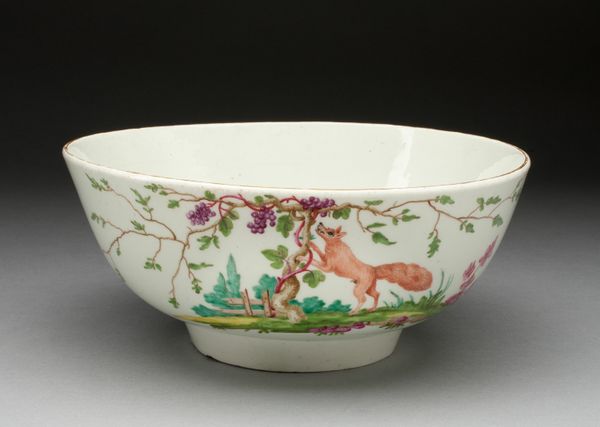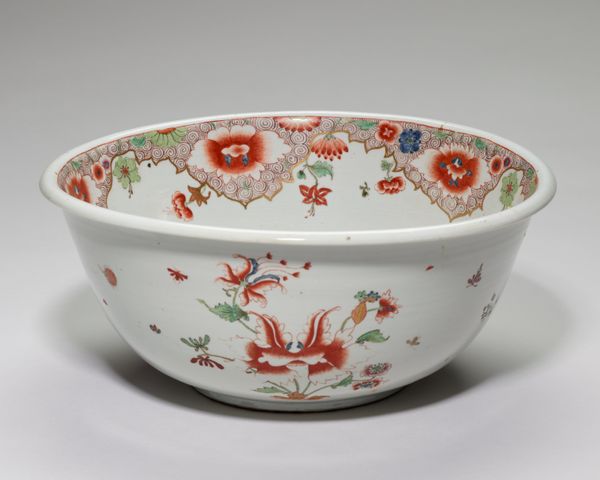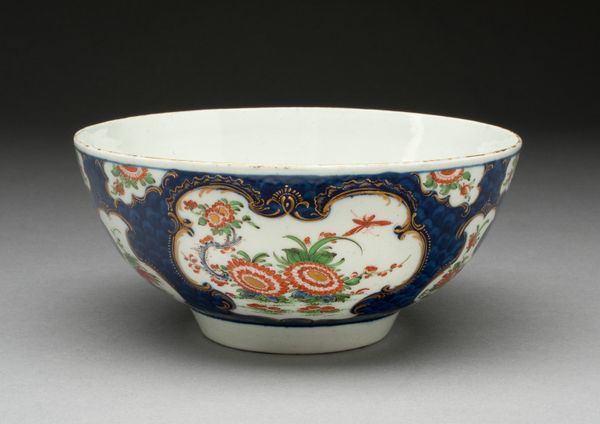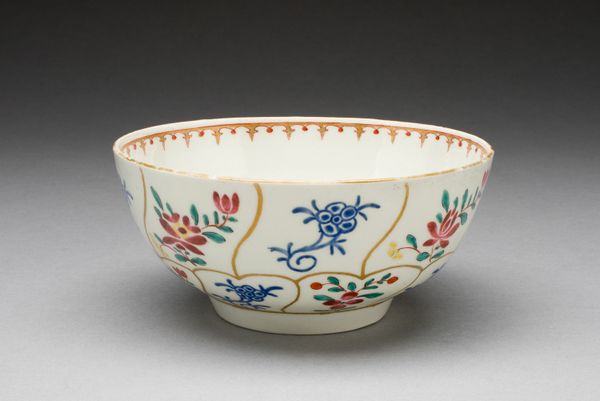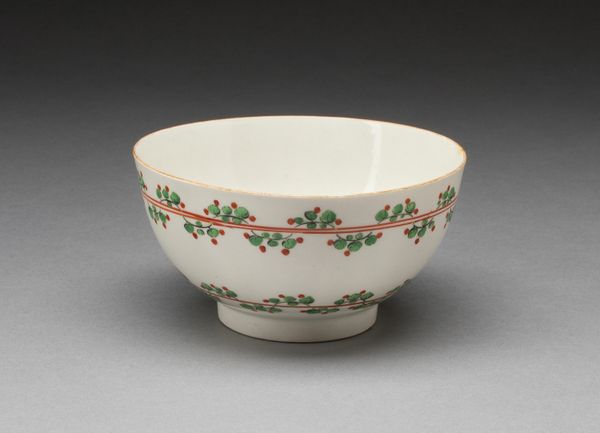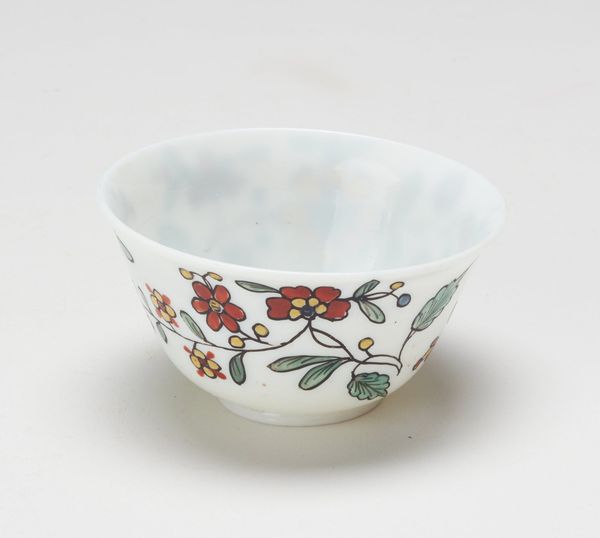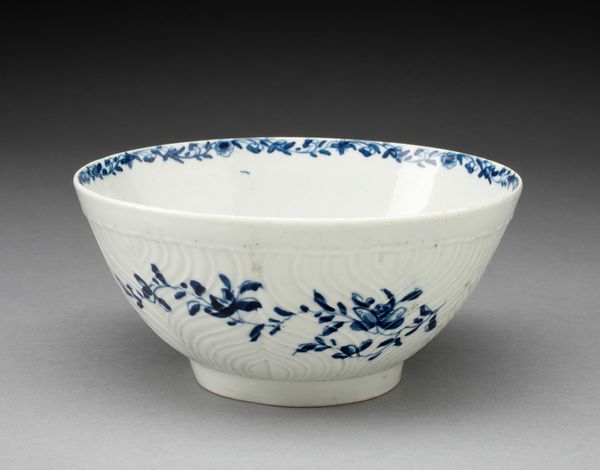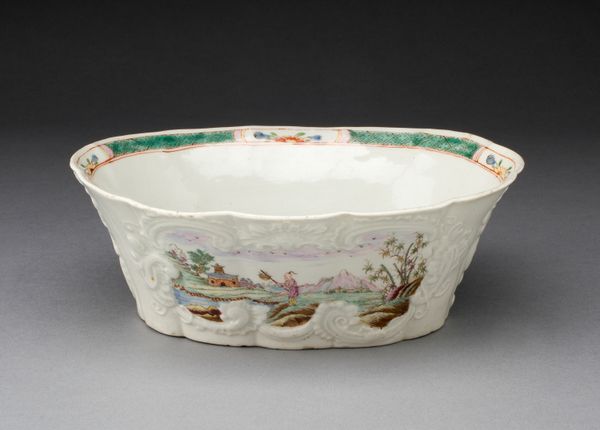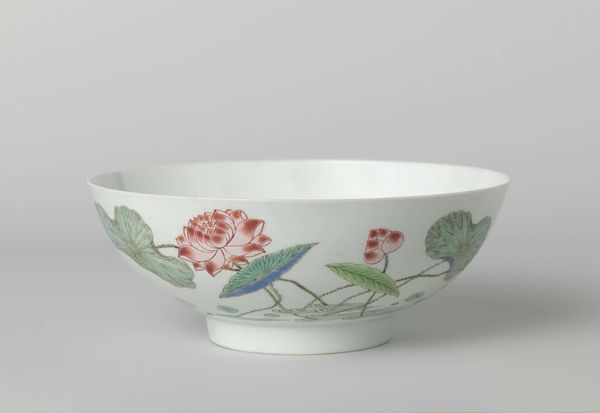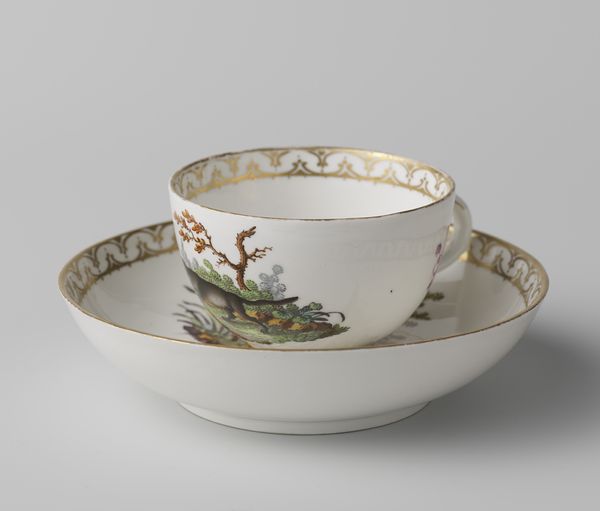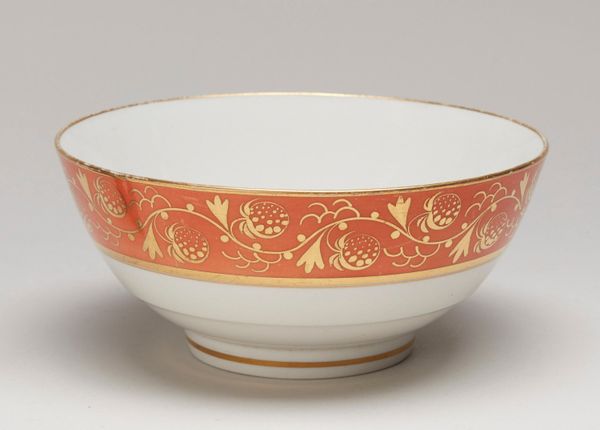
ceramic, porcelain
#
ceramic
#
porcelain
#
ceramic
#
decorative-art
#
rococo
Dimensions: H. 5.7 cm (2 1/6 in.); diam. 11.9 cm (4 1/3 in.)
Copyright: Public Domain
Editor: This is a porcelain "Slop Bowl," created around 1770 by the Worcester Royal Porcelain Company. It feels so delicate and precious, but I’m curious: what can you tell me about how something like this fits into its historical moment? Curator: Well, "slop bowls" were part of the tea ceremony, especially in elite households. Think about it: porcelain like this, during that period, signifies global trade, colonial exploitation, and conspicuous consumption. What was seen as refined taste actually had some complex social underpinnings. Editor: Exploitation? I wouldn’t have immediately made that connection just looking at the flowers and leaves. Curator: The desire for tea in Europe drove demand for Chinese porcelain, which then inspired European production, often by appropriating techniques and designs. Meanwhile, tea and sugar were cultivated using enslaved labor in colonies. This bowl, then, speaks volumes about networks of power and material culture. How does seeing that history change your perspective on it? Editor: It definitely makes me think differently about Rococo’s prettiness. Knowing the origins complicates my understanding; it's like the bowl is a material record of some troubling dynamics. I’ll have to remember this is not a standalone pretty piece but part of something bigger. Curator: Precisely. Museums themselves shape our view, too. Pieces like this once signified wealth. Now they're objects of study in spaces accessible – theoretically – to everyone. Editor: So it’s kind of gone through a social remix. That’s pretty wild. Thanks!
Comments
No comments
Be the first to comment and join the conversation on the ultimate creative platform.
